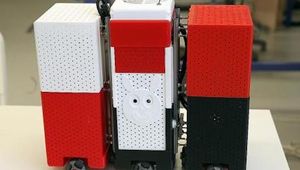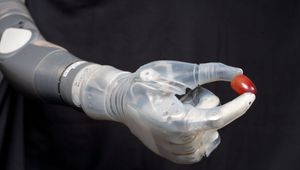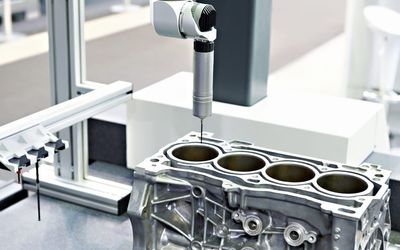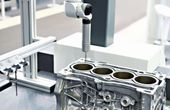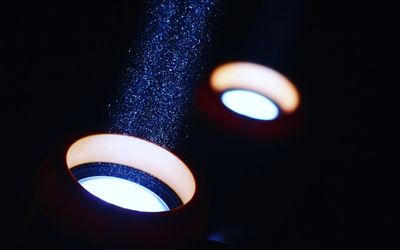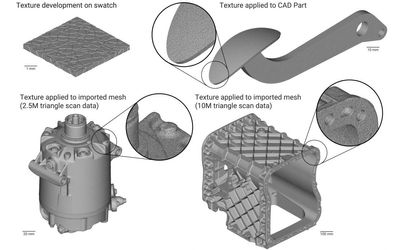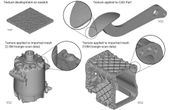UltiMaker Factor 4
Industrial-grade 3D printer with extensive support for engineering materials.
Technical Specifications
| Feeder Type | Dual Extruders |
| Temperature Capability | Up to 340 Degrees |
| Interface Type | 7-inch capacitive touchscreen |
| Core Replacement | Swappable Printing Cores |
| Printing Technology | Fused Deposition Modeling (FDM) |
| Print head | Dual Extrusion with Auto-nozzle lifting |
| Nozzle Diameter | 0.25 mm, 0.4 mm, 0.6 mm, and 0.8mm |
| Applications | Factory Floors |
| OS Support | Windows, MacOS, Linux |
| Connectivity | WiFi, USB, Ethernet |
Overview
The UltiMaker Factor 4 is an industrial-grade 3D printer designed to meet needs of time-sensitive and quality-oriented production lines. This printer can streamline production processes while ensuring optimal production quality. It’s a flexible option for various industries featuring a printing compatibility with more than 200 engineering materials including Nylon, ABS, PLA, CPE, and many others. It features dual extrusion technology with complete on board print reporting and high repeatability for consistent and quality industrial products. Designed for precision and predictability, the UltiMaker Factor 4 comes across as a robust 3D printing option with high temperature capabilities to fit inside harsh production lines in factories.
High Compatibility with Engineering Materials
The UltiMaker Factor 4 specializes in working with a wide range of engineering materials. Hence, it can produce 3d printed products of varying strengths, flexibility and sturdiness. Some of the most commonly used printing materials include:
PETG
CPE
PC
TPU 95A
PP
PLA
Tough PLA
ABS
Nylon
PPS CF
CPE+
The print cores are powered by an EEPROM chip and feature a quick-swap design. So, it eliminates the need of any complex tools for changing the cores for different types of printing jobs. The core is compatible with all UltiMaker print cores such as the AA, BB, CC, DD, and HT. The smooth changeover process reduces changing time and downtime, and enhances production efficiency.
Moreover, the UltiMaker Factor 4 features an especially designed filament. The PPS CF filament is a carbon fiber reinforced polyphenylene sulfide material that can be printed using the HT print cores. It’s a next-level composite material designed for high-quality performance that goes seamlessly with the UltiMaker Factor 4.
Print Process Reporting
A standout feature of the UltiMaker Factor 4 is its Print Process Reporting, which provides detailed, easy-to-read reports within 15 minutes of completing a print job. This tool tracks and analyzes key print parameters like extrusion factors, nozzle performance, and build plate temperatures. The data is compiled into a clear report, highlighting any deviations with detailed information, 3D images, and graphs. This ensures each part meets high-quality standards before it's put to use, making it easier to validate every print.
Print Process Reporting also helps catch potential issues early, reducing downtime and ensuring consistent part quality. Whether it's a minor variation in filament flow or a more significant structural issue, the insights from these reports let users address problems quickly. By using Print Process Reporting, users can improve reliability and efficiency, save costs, and enhance their overall production process.
Designed for High Accuracy, Repeatability and Powerful Performance on Factory Floors
The UltiMaker Factor 4 is one of the powerful 3D printer models from the UltiMaker series. It’s designed for the factory floor, so it weighs around 120 kg, slightly on the heavier side. It can generate a 600 Watt output, best suited for heavy-duty application in 3d printing. Moreover, it can go up to 340 degrees Celsius with a printed bed temperature of up to 120 degrees Celsius, which enables it to 3D print with a wide range of engineering materials.
The printer features a triple-insulated build chamber and an automated material handling system that ensures filament quality. Its direct dual extrusion technology enables flexible printing options for varying strengths. Moreover, it facilitates printing with multiple materials at a time.
Moreover, the UltiMaker Factor 4 features an accuracy of up to ± 0.2 mm + ± 0.2% of feature nominal length over the full build plate and across multiple printers. It also enhances material quality thanks to an integrated HEPA filter that removes up to 95% of ultrafine particles.
Its modular design allows developers to integrate with the support network that is essential for immediate part replacement, a critical element in enhancing production efficiency on production lines. The onboard structural integrity validation features ensure robust product design, and there are advanced safety features and an instant STOP button to halt the operations in an emergency.
The printer seamlessly connects with external devices and PCs over WiFi, USB, and Ethernet, and is compatible with multiple operating systems including Linux, MacOS, and Windows. It also features a 7-inch capacitive touchscreen to visual monitoring and onboard print process reporting tools.
References
Introducing Print Process Reporting
